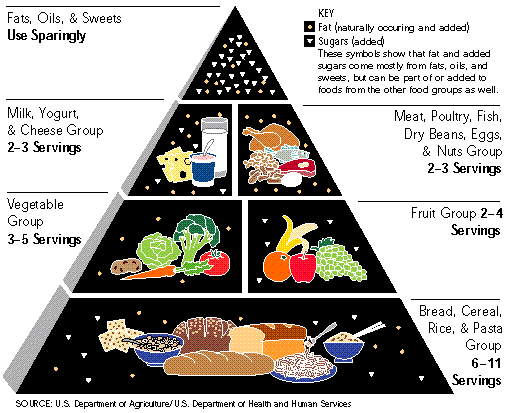Description
Some questions answered in the 'UK Organic Food and Drink Market Research' report include:
Should a stronger emphasis be placed on animal welfare within the organic message?
How important are under-25s to the organic market?
What is driving consumer scepticism towards the organic label?
Will baby food continue to defy the downturn in spending on organic?
The beleaguered organic market is undoubtedly one of the major casualties of the economic downturn, its value having tumbled by 25% since its peak in 2008. In the current era of austerity, organic produce suffers heavily from the overriding perception that it is overpriced. The economic outlook remains uncertain and the organic market continues to be beholden to consumers prioritising price over other food-related issues. http://www.bharatbook.com/market-research-reports/food-and-drinks-market-research-report/organic-food-drink-market-research-report-uk.html
However, it is not price alone which has held the organic market back. Shoppers appear to find the multi-faceted organic concept a confusing one and many remain sceptical about the organic label. As a result, consumers place a lot more importance on other ethical food considerations such as animal welfare, despite this being a key principle of the organic proposition. Communicating clearly to consumers the specific tangible benefits organic food offers will be key to restoring consumer faith in the virtues of the organic label and will help to justify the higher price points.
It is not all doom and gloom for the organic market, however. The enthusiastic, if still minority, commitment from young, food-aware adults has inspired cause for optimism in the future of the market, as does the projected growth in ABs and 25-34s. The market is also expected to benefit from the ongoing marketing campaign launched in 2011 by the Organic Trade Board the first of its kind in this market.
This report looks at the organic food and non-alcoholic drink market in 2012, analysing consumers’ purchasing habits, what organic categories they buy into, their understanding of the differences between organic and non-organic food and drink, and their attitudes towards these products.
This report covers the UK retail market for organic food and non-alcoholic drink produced according to organic principles and standards. The main sectors covered include fruit and vegetables, meat and poultry, dairy products, fish and seafood, eggs, prepared foods and groceries, cereal products, baby and toddler foods and infant formula. It includes organic foods that are fresh, frozen or ambient.
Organic farming involves the development of management practices that aim to avoid the use of agrochemical inputs and to minimise damage to the environment and wildlife.
To be certified organic, products must derive from sustainable management practices that rely on crop rotation, biological pest control and use of natural fertilisers. Management practices avoid the use of artificial herbicides, pesticides and fertilisers, genetic modification and, for livestock production, the routine use of antibiotics, growth promoters and other drugs. For organic processed products, not less than 95% of the ingredients must be certified as organic. Products made with between 5% and 30% of non-organic ingredients can highlight the organic content legally the label must state the percentage of total organic agricultural ingredients.
Organic production standards were first introduced in the early 1970s. The term organic became strictly defined in European law in 1993 with the introduction of EC Council Regulation 2092/91, which ensured the strict regulation of organic food production. This EC Regulation sets minimum standards for organic production, which conform to those laid down by the International Federation of Organic Agricultural Movements (IFOAM). The Regulation also sets out the practices and inputs that may be used in organic production, covers inspection systems, and it also applies to processing, processing aids and ingredients in organic foods. Only organic foods originating from growers, processors and importers that are registered with an approved body and subject to regular inspection can be sold as organic.
To ensure that organic standards are adhered to, in whichever country the food is produced, the symbol or EU code number of a certification body must be clearly visible on the label of all organic foods. The new EU organic leaf logo became compulsory from 1 July 2012 on all pre-packed organic food products that meet the necessary standards. Standards cover registration, certification, the environment and conservation, production, permitted and non-permitted ingredients, processing, packaging and distribution.
Companies Mentioned
Channel 4
Facebook, Inc.
Green & Black's Ltd
Heston Blumenthal
International Federation of Organic Agricultural Movements
Kraft Foods UK
Lactalis UK & Ireland
Twitter, Inc.
Waitrose Ltd
Yeo Valley Farms (Production) Ltd
YouTube, Inc.
Introduction
Definition Abbreviations
Executive Summary
The market
Figure 1: UK retail value sales of organic foods, 2007-17
Figure 2: UK retail value sales of organic foods, by category, 2012
Market factors The shifting population structure presents challenges and opportunities
Figure 3: Trends in the age structure of the UK population, 2007-17
Growth in ABs bodes well for the market Organic sits well below other ethical food-related issues The consumer Six in ten buy organic food and drink
Figure 4: Changes in organic food and drink purchases, July 2012
Figure 5: Buyers of organic food and drink, by gender, age and socio-economic group, July 2012
Vegetables and fruit are most popular organic products
Figure 6: Types of organic food and drink purchased, July 2012
Figure 7: Selected types of organic food and drink purchased, by age group, July 2012
The organic label suffers from a perception of being overpriced
Figure 8: Differences between organic and non-organic food and drink, July 2012
Having fewer chemicals is organic’s best known attribute Box schemes are deemed to be overpriced by three in ten consumers
Figure 9: Attitudes towards buying organic food and drink, July 2012
Three in ten would like to see more information about the specifics of the organic promise A large minority would purchase organic if prices were not higher than for non-organic
Figure 10: Attitudes towards organic food and drink, July 2012
Four in ten find the term organic’ too vague The market faces a number of challenges What we think
For more information kindly visit :
Organic Food & Drink Market Research Report - UK
Or
Bharat Book Bureau
Tel: +91 22 27810772 / 27810773
Fax: + 91 22 27812290
Email: info@bharatbook.com
Website: www.bharatbook.com
Follow us on twitter: https://twitter.com/researchbook
Our Blogs: http://in.linkedin.com/pub/bharat-book/3a/98/512
http://financemarketreports.blogspot.com/

 Introduction To Of Some Lower Cholesterol Foodstuffs
Cholesterol is a fat-like element contained in the physique
Introduction To Of Some Lower Cholesterol Foodstuffs
Cholesterol is a fat-like element contained in the physique
 Starting Up An Aquaponics Set Up From See The Easy Way
Planting seeds in your aquaponics system can be a lot simpl
Starting Up An Aquaponics Set Up From See The Easy Way
Planting seeds in your aquaponics system can be a lot simpl
 The Simplest Way To Lessen Your High Cholesterol By Natural Means
High-cholesterol is a major variable inside the countrywide
The Simplest Way To Lessen Your High Cholesterol By Natural Means
High-cholesterol is a major variable inside the countrywide